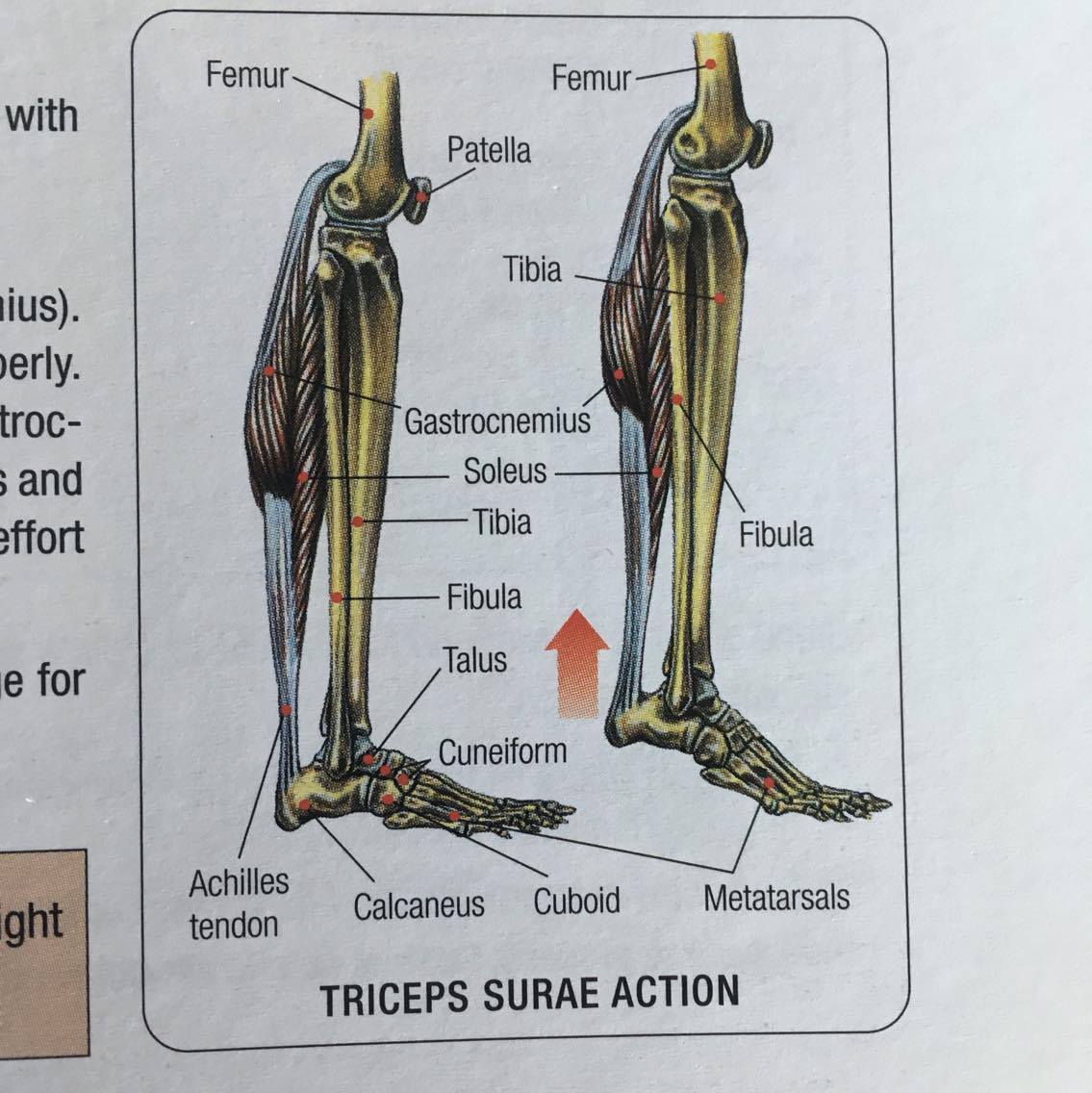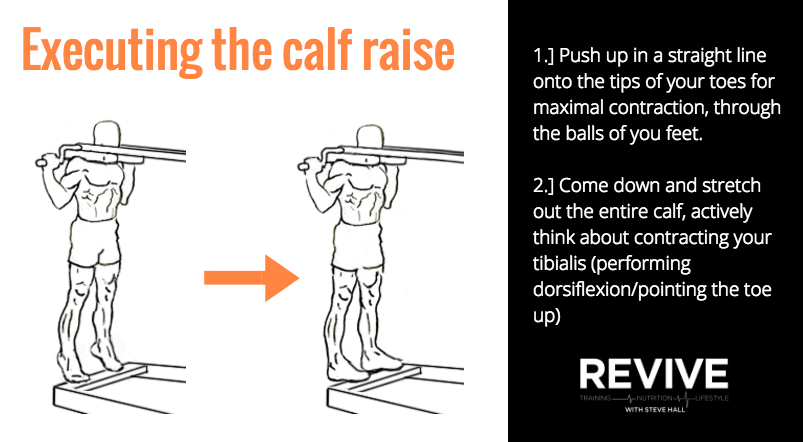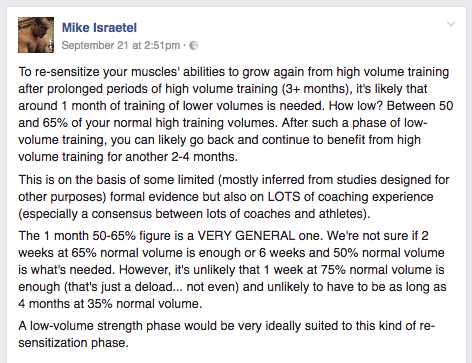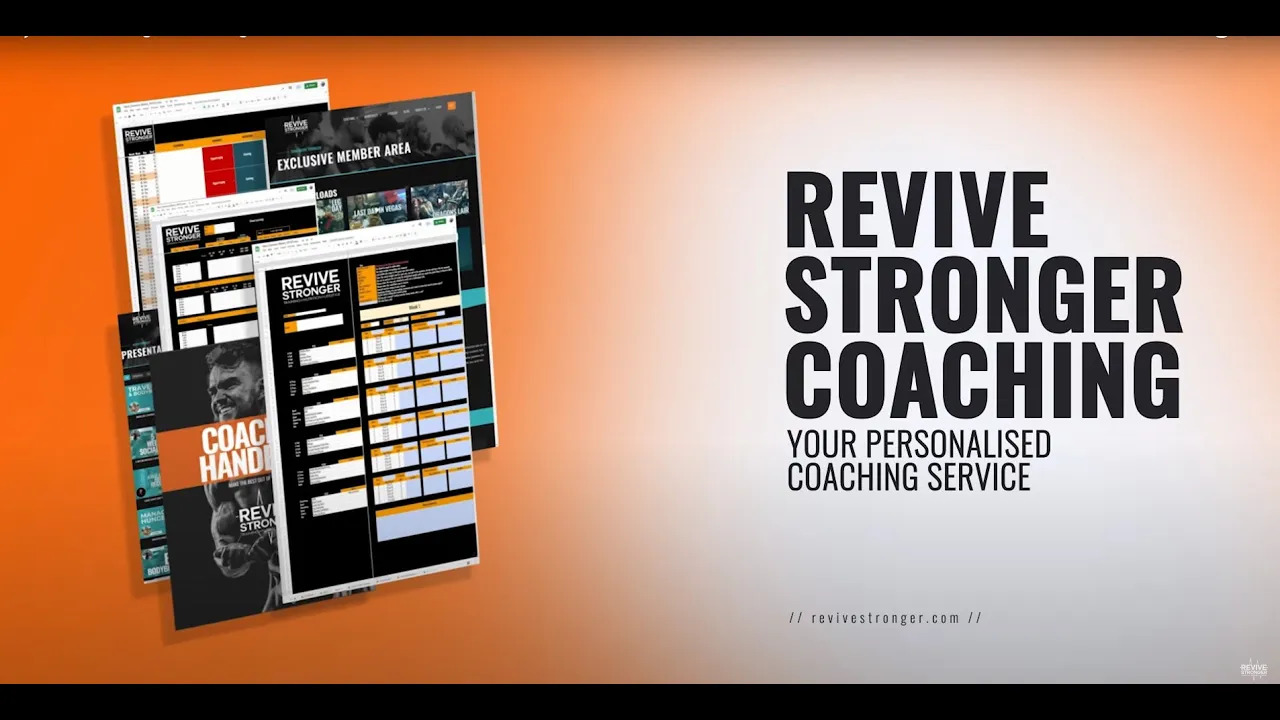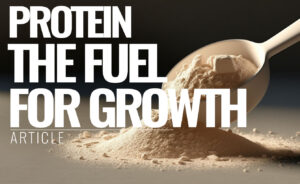
Revive Stronger
Bodybuilder’s Bible to Bigger Calves
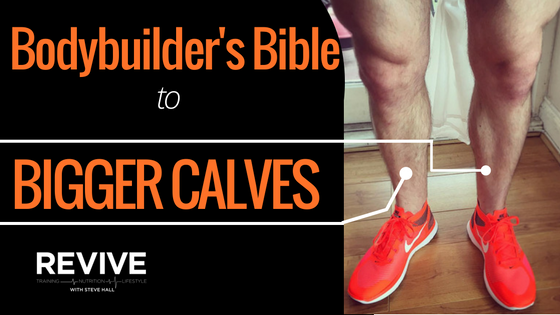
As a bodybuilder we all want bigger calves.
Heck we want everything bigger.
But if you were to ask 10 bodybuilders what muscle group they found hardest to grow for most it would be their calves. I’m one of those bodybuilders, my calfs have always been stubborn, or at least I thought they were. The thing is it’s one of those muscle groups who’s appearance is heavily determined by genetics.
However, I am a big believer in being able to dramatically improve upon where you are today. In that:
Table of Contents
everyone can seriously improve their calf development.
If you have struggled to grow your calves then you need to read this article and implement the advice given.
How to get muscle to grow?
First we must answer this question, because the calf isn’t unique, it doesn’t need special nutritional or training approaches to get it to grow. Muscle growth in most cases comes down to a few factors:
1.] Progressive Overload – things must get harder, you need to do more overtime
2.] Calorie Surplus – for 99% of people you need to provide your body with the raw material to add additional lean tissue
3.] Sufficient Volume & Intensity – give your body sufficient stimulus to grow and adapt (I will cover this is more detail below)
Those are the three most important factors to get right, the details past those principles matter much less. By getting those three nailed you will see growth, but there are some finer details that can massively improve your calf development, please continue reading.
Take a deep look at the calves
After we have that initial grounding knowledge in place I think it’s also important to take a look at the calf itself. As you can see below the calf is made up of the soleus and gastrocnemius (gastroc), the gastroc is the more visually apparent chunk of the calf and the soleus is behind. The way these insert on people is very variable, generally the lower the gastroc inserts and the shorter the achilles tendon the larger the calf will appear, this is very much dependent on genetics.
Muscle Actions
- Soleus: Plantar flexion (pointing the toe down)
- Gastroc: Plantar flexion & knee flexion
What this means is when our legs are straight and we perform a calf raise both the soleus and gastroc are involved, however when we do a calf raise with our knees bent only the soleus contracts. This is down to something called ‘active insufficiency’, in that because the gastroc crosses two joints (ankle and knee) when the knee is bent there is very little tension placed onto it, the knees need to be somewhat straight to avoid this.
Fibre Types
- Soleus: 80 – 96% Slow Twitch [1]
- Gastroc: mixture slow and fast twitch muscle fibres, with a tendency to be slow (50 – 76%) [1]
As noted previously during a straight leg calf raise both muscles of the calf are involved, but because the gastroc is more fast twitch, it’s used to a greater degree during this movement. Slow twitch muscle fibres can take quite a beating, and thus recover faster between workouts, this is something worth considering when training the calves, a predominantly slow twitch muscle.
Furthermore, fast twitch muscle fibres have more potential for growth [3].
Muscle Size
The calves are a smaller muscle group, whether you’re genetically blessed or not, they’re smaller than the quads, hamstrings, glutes etc. by a large degree. This is something we want to take into account when designing our programme, as smaller muscle groups recover faster and therefore can trained more frequently.
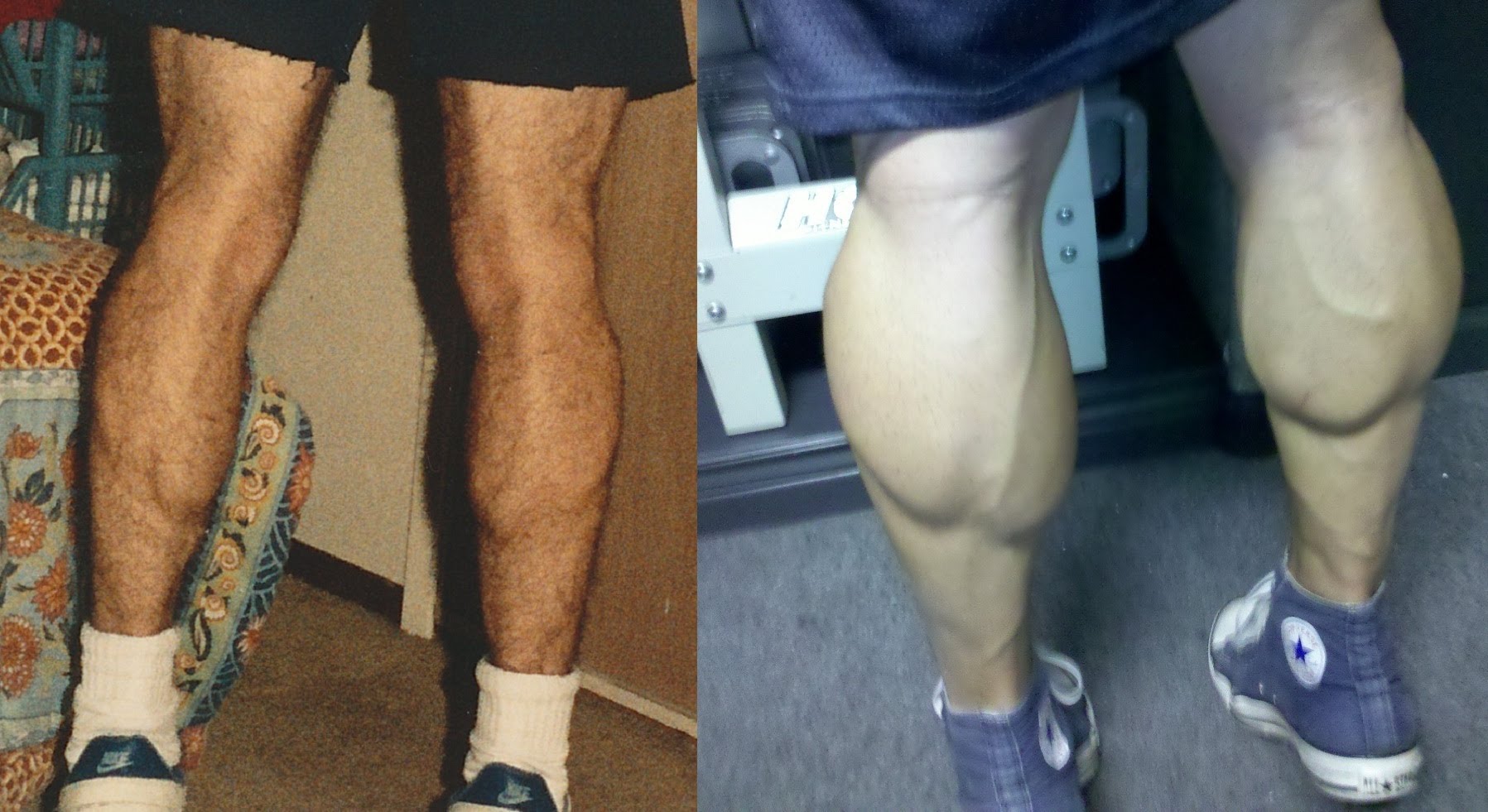
Practical Considerations
From looking at the calf we can already get some great insight into how we might want to get it to grow. We now know that the gastroc is going to get most growth from straight leg exercises, and the soleus from bent knee exercises. In addition, the soleus is mainly slow twitch, and is best targeted via bent knee calf raises, thus when performing these it makes sense to use a higher rep range as this will get the most out of the muscle.
- Hit the whole calf: Use both straight leg and bent knee calf raises
- Intensities specific to fibre type: Utilise a higher rep range for bent knee raises (10 to 20) and a lower rep range for straight leg (6 to 10) – this is not to say you can’t go outside these ranges, just these are best
- Training frequency determined by muscle size: can be on the high side, especially for bent knee calf raises
Although fast twitch muscle fibres have more potential for growth, I don’t think we should only focus on the gastroc (that is much more fast twitch) because as Ogborn & Schoenfeld [3] have explained, slow twitch fibres can also be developed in order to maximise the overall increase in size of a muscle.
However, straight leg calf raises will give you the most bang for your buck if you’re short of time.
Execution & the mind muscle connection
I started this article giving you the three things we need to get in place to get a muscle to grow, but I actually missed one. Before we can get growth we need to make sure we’re actually USING the muscle that we want to grow. If we’re not correctly activating the muscle, then why would it grow?
So it might sound a bit out there, but the mind muscle connection has got some standing and to quote Brad Schoenfeld:
“Understand that strength training is not simply the act of lifting a weight from Point A to Point B. Rather, you must concentrate on the target muscle(s) that you’re working and channel your efforts into making those muscles exert the required force to execute the lift. Otherwise, secondary muscle movers are bound to dominate during performance, reducing activity of the target muscle.”
I’ve got to be honest, I must have been doing calf raises for years without paying much attention to whether or not the calf was actually contracting properly. Since correcting this and changing nothing else about my programming my calf development really sped up.
How to execute the calf raise
It seems simple enough, you just push upwards on your toes to perform the exercise. Well yes, and no, you see so many people end up rolling onto the outside of their foot when performing the calf raise, this shortens the range of motion (ROM) and takes tension off the calf and puts it onto the feet. Not good.
Now you’ve seen the calf and you know what actions it performs that will help with your ‘connection’ and ability to get it to maximally contract. However, apart from just trying to concentrate and ‘feel’ the muscle working I do have some more practical tips for you to try.
Change your footwear
Since switching from thick soled trainers like chucks or a standard pair of nikes to a ‘bare-foot’ style trainer with a thin sole I have felt my calf’s working a lot harder. There is something about being able to feel the force fully through your toes which allows you to really engage the calf.
You could try going completely barefoot, but from personal experience this hasn’t gone well as the exercise became painful, which is definitely something you want to avoid.
Change your tempo
For a moment scroll back up to the image of the calf muscles and look out for the achilles heel. Did you see how big it is? This is a large piece of very strong tendon that acts much like a rubber band, when stretched it wants to re-bound back. For sprinting and jumping this is fantastic, it provides us a bunch of power. However, it can prevent us from fully using our calves, blunting growth.
Ever seen a dude bouncing up and down on a calf raise? I have. These guys aren’t using much calf at all, and are bouncing straight off their achilles tendon, and that’s a great way to prevent growth. We want to avoid the tendon taking over and make sure we’re using the muscle.
How to prevent the tendon taking over:
- Pause at the bottom of the lift, fully stretching out the calf and heel, for at least 3 counts
- Explode up onto the tips of your toes to get the calf maximally contracted
This will prevent your achilles heel taking over and force your calf muscles to do the work through the entire ROM. It will mean the load you can do will have to come down, but it will allow you to actually use the muscles you’re targeting.
So suck it up.
Brad from 3DMJ demonstrates this clearly in the video below:
Providing sufficient volume
Now I already talked about ensuring you have sufficient intensity and volume, and we touched on intensity above. So what about volume? In a meta analysis by Wernbom et al they found that; ~40 to 70 reps done 2 to 3 times per week was appropriate for most people and muscle groups [2].
What this looks like:
At the lower end:
- Straight leg calf raises- 3×8 = 24 reps – done twice a week
- Bent knee calf raises- 2×12 = 24 reps – done twice a week
- 96 reps
At the higher end:
- Straight leg calf raises- 3×8 = 24 reps – done three times week
- Bent knee calf raises- 4×12 = 48 reps – done three times week
- 216 reps
What I recommend you do is start at the lower end of these recommendations, track your progress and recovery, if things are going well then try adding a little more volume.
The concept of Maximal Recoverable Volume (MRV) comes into play here, in that you want to be moving towards the most you can do and recover from, breach it momentarily and then deload and repeat. This wants to be done over the course of a number of weeks, so you are initially improving and adapting accumulating volume and fatigue to a point at which you overreach (do more than you can recover from) and deload to start over.
Think of this like gradually walking up stairs (accumulate volume) and once at the top (at/just over your MRV) you come to a slide that quickly takes you back down (deload).
I’d also note that 2 to 3 times a week is another good but general recommendation, some people may find that a higher frequency provides them better results, especially considering the calves are a smaller, slower fibre type muscle.
Periodisation
You can’t go balls to the wall on your calves every day of the year, just like you can’t sustain high speeds in a car. Eventually you’ll need to stop, gather yourself, let things settle, before going again. This is down to something called adaptive resistance, and it essentially means the more you do something the less you get from it, and it is why variety is important.
Progress gets slower and slower, to a point you hardly see any progress. At this point you need to take your foot off the gas, let things settle, so that the calf’s can re-sensitize to higher volumes again. Mike Israetel talks about this in greater detail here:
You need to back off now and then to allow adaptions to keep taking place (periodisation), so every few months put your calf training on the back burner, keeping volumes very low. Once we become advanced trainees it takes a large build up of stress to keep adaptions occurring, by periodising our training we can keep improving.
‘Bro-tacular’ calf tips
OK so enough with all the science, that stuff is amazing and it will lay the foundation for your calf growth, but now I want to share with you some of my ‘bro-tacular’ tips.
Use MyoReps
My calves seem to never get sore, but after trying myoreps they were very sore, for days. That indicates I caused significant muscle damage, which we know is a pathway to muscle growth. I have found myoreps to be a great way to accumulate a lot of volume in a short period of time, they can easily be tagged onto your hypertrophy workouts.
Myoreps also produce a fantastic pump, filling the muscles with blood and metabolites, contributing to other muscle growing pathways. The pump is somewhat similar to Blood Flow Restriction (BFR) but you don’t need any special bands, making this much more convenient.
View this post on InstagramA post shared by ????? ???? (@revivestronger) on
However, I personally don’t feel these are something you want to be doing year round and I would periodise this technique, putting them in every 3rd block of hypertrophy training (or every 3 months or so). The body gets very sore quickly but then starts to adapt and eventually resist adapting further.
Intra-session volume split
Now my sub-title makes this sound like something fancy, sorry to disappoint you, it’s not. But, it is really effective and much like you split your weekly volume into several workouts to get ‘higher quality’ reps, you can do the same within your workout. Let me give you an example:
You have 5 sets of Straight Leg Calf Raises to perform, rather than doing 5 in one go, you do 3 and then go onto another exercise before then returning to do your last 2 sets, in the hope that those last 2 sets were of greater quality because you gave your calves more rest.
This comes in handy for a few reasons; higher per set quality, really useful when doing lots of sets and you can use the sets of calves as a rest for larger compound movements that really tire you out.
Summary
1.] Make sure you are executing your calf raises properly.
2.] Ensure you have progressive overload & a calorie surplus in place.
3.] Work towards your MRV.
4.] Periodise your calf work, back off now & then.
5.] Find what techniques work best for you.
Now you can finally leave #TeamNoCalves and join #TeamMaximisingGeneticPotential (wow that’s a mouthful).
WHAT NEXT?
If you liked this, you will love:
- Mike Israetel on a growing your back
- How to grow huge hamstrings
- Mike Israetel on getting a colossal chest
Join my free facebook group or add me on snapchat (revivestronger) and ask your question there, I will respond asap. Or if you’re after a fresh training programme I have a free 4 week plan using DUP that you can download for free here.
One more thing…
Do you have a friend who would love the above? Share this article with them and let me know what they think.
[bctt tweet=”Bodybuilders Bible to Bigger Calves” username=”revivestronger”]
References
- https://www.strengthandconditioningresearch.com/hypertrophy/muscle-fiber-type/
- Wernbom, M., Augustsson, J., & Thomeé, R. (2007). The influence of frequency, intensity, volume and mode of strength training on whole muscle cross-sectional area in humans.
- Ogborn, D., & Schoenfeld, B. J. (2014). The Role of Fiber Types in Muscle Hypertrophy: Implications for Loading Strategies. Strength & Conditioning Journal, 36(2), 20-25
We are a personal coaching service that helps you achieve your goals. We want you to become the best version of yourself.


